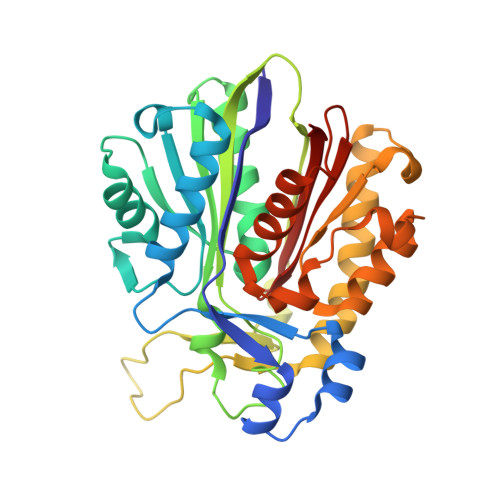Antibacterial FabH Inhibitors with Mode of Action Validated in Haemophilus influenzae by in Vitro Resistance Mutation Mapping.
McKinney, D.C., Eyermann, C.J., Gu, R.F., Hu, J., Kazmirski, S.L., Lahiri, S.D., McKenzie, A.R., Shapiro, A.B., Breault, G.(2016) ACS Infect Dis 2: 456-464
- PubMed: 27626097
- DOI: https://doi.org/10.1021/acsinfecdis.6b00053
- Primary Citation of Related Structures:
4Z8D, 5BNM, 5BNR, 5BNS, 5BQS - PubMed Abstract:
Fatty acid biosynthesis is essential to bacterial growth in Gram-negative pathogens. Several small molecules identified through a combination of high-throughput and fragment screening were cocrystallized with FabH (β-ketoacyl-acyl carrier protein synthase III) from Escherichia coli and Streptococcus pneumoniae. Structure-based drug design was used to merge several scaffolds to provide a new class of inhibitors. After optimization for Gram-negative enzyme inhibitory potency, several compounds demonstrated antimicrobial activity against an efflux-negative strain of Haemophilus influenzae. Mutants resistant to these compounds had mutations in the FabH gene near the catalytic triad, validating FabH as a target for antimicrobial drug discovery.
Organizational Affiliation:
Infection Innovative Medicines, AstraZeneca R&D Boston , 35 Gatehouse Drive, Waltham, Massachusetts 02451, United States.
















